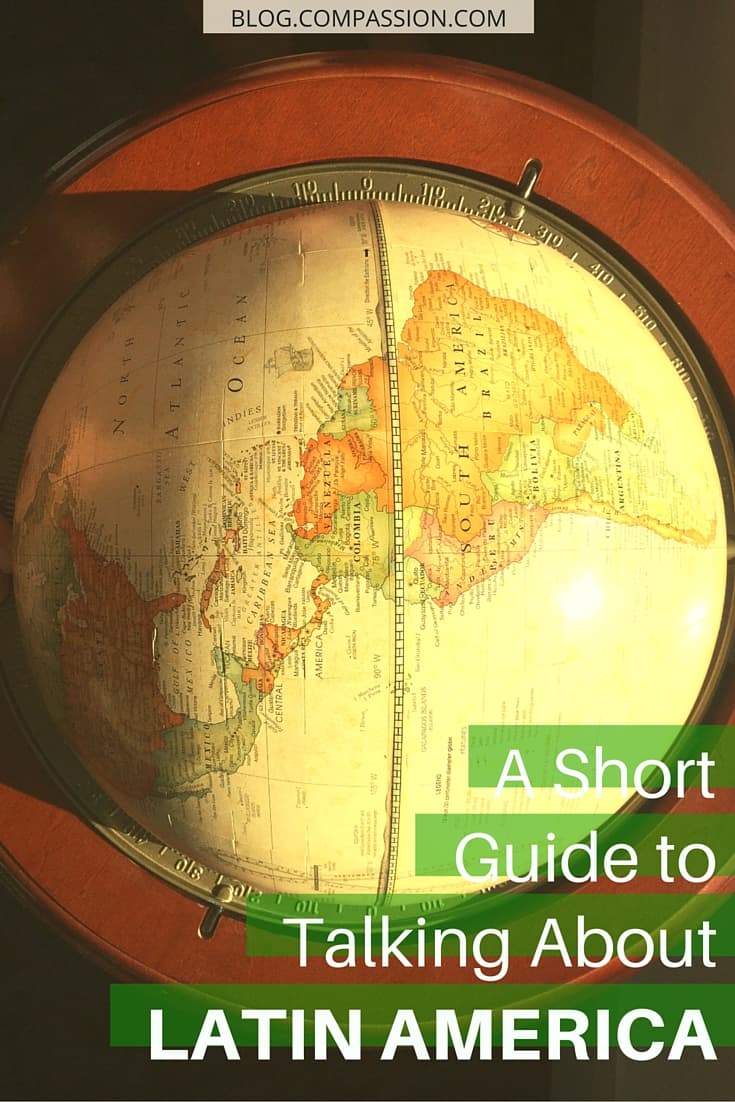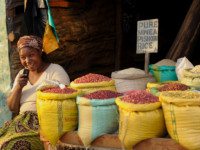It’s human nature to use generalizations. We compartmentalize information about the world as we view it through our own tinted lenses of experiences and interactions. And if we’re not careful, that compartmentalization can shape what we think about a group of people into a singular story.
As Amber shared in A Short Guide to Talking About Africa,
“It’s easy to latch on to one particular thing about a community or country and define its essence accordingly.”
Much like the singular stories about the United States and Africa that Amber talks about, the cultural generalizations made about Latin America are crafted from our limited connections, assumptions and the media.

We are a country of immigrants. Mexico borders four of our states, we have a complex relationship with Cuba, Puerto Rico is U.S. territory, and we have more Spanish speakers in our country than any other demographic. In many ways, we feel culturally and geographically close to Latin America because of those few neighboring countries and the presence of Latinos in the U.S.
We’re so close, that it’s easy to assume we “get” Latin America and Latin Americans. We’ve all been guilty of this, including me. And I am realizing there is damage that can be done when we think we understand a diverse region with many races and cultures.
I am fairly new to Compassion (coming up on my year anniversary, to be exact), but working here supporting communications for our Latin American and Caribbean Region has greatly expanded my own understanding and perspective of Latin America. Having done graduate work in Latin American studies, I’ve had a passion for the people and cultures of Central and South America for a while, but I’m still learning that there is greater depth to each country than I could have imagined.
So, let’s dig a little deeper and change the way we talk about Latin America together.
When talking about Latin America, here’s a short guide of tips to remember:
1. Each country is unique!
There are different foods, cultural traditions, slang terms, musical genres, dances, geography, languages … you name it. From the wide stretch of salt flats that reflect the sky in Salar de Uyuni, to the penguins waddling in “el fin del mundo,” Ushuaia, to the turquoise-colored water and white sand beaches of Buzios, to the lush vegetation of Costa Rica’s rainforests, to Volcán de Agua peeking out from colorful storefronts and cobblestone streets in Antigua, Latin America is overflowing with extraordinary habitats.
And let’s not forget about language. For example, in Guatemala, one of the countries where we have child development centers, there are more than 24 official languages! And so far, I have found more than 11 different Spanish words for “straw.”
2. Identifiers can be misleading or incorrect.
“Spanish music” means music from Spain, while “music in Spanish” refers to music in that language. Or why don’t we challenge ourselves to get specific with terms like bachata, salsa or merengue? Likewise, let’s remember that the word “America” includes North, Central and South America and “Americans” are people from all three of those regions. Being specific with identifiers, especially someone’s country of origin, will help us avoid cultural misunderstandings around labels that may have a sensitive history.
3. Acknowledge the complexities of poverty and wealth within each country.
Many countries in Latin America have large metropolitan cities offering upscale cuisine, exceptional museums, beautiful architecture, advanced infrastructure and innovative technology. At the same time, there is huge income inequality – affecting both the rural and urban areas. And according to the World Economic Forum, Latin America is still the most unequal region in the world.
4. Countries are more than their tourist attractions.
Traveling is a must to gain deeper insight and understanding about a place or people! But tourist experiences (honeymooning in Cancun or hiking Machu Picchu with friends) do not define an entire city, country or region nor do they make us experts.
5. Read!
I’ll be honest … I’m still trying to finish Gabriel García Marquez’s Cien Años de Soledad. But this TED Talk by Ann Morgan, who read a book from every country in the world, has inspired me to improve in this area. I’m looking forward to reading the lyrical poems of Gabriela Mistral and about the courageous life of Rigoberta Menchú. I have also enjoyed Pablo Neruda’s melancholic poems of love and loss.
Let’s acknowledge that although we may be neighbors with parts of Latin America, we still have a lot to learn. Being more intentional about avoiding stereotypes and misplaced assumptions will not only make us sound more intelligent, but will also show that we value and respect the many cultures and identities of Central and South America.
And if the child you sponsor is from a country in Latin America, have some fun researching the country and asking them about their community and culture in your next letter.
What countries in Central or South America are you planning on visiting? Any books you would recommend? Did I miss any tips you’d suggest? Share them below in the comments!








4 Comments |Add a comment
Great article, Gracie. Having worked in the desert north of Mexico for 10 years, very far away from the typical tourist destinations, I have a deep respect and love for the people. And the place. Cuatro Cienegas, is a magical, unforgettable living laboratory for science. But more than that, there is an abiding resiliency in the people who host us and seek to understand the unique environment that rich and poor have protected for centuries.
Born and raised in Japan, I was first acquainted with the ministry of Compassion while attending college in the U.S.and became a sponsor of a little girl in Colombia where I met my wife.
Every time I study a foreign language, I always make it my habit to study the history of the country where the language is spoken and as I was learning Spanish, I was also learning about the history of La Republica de Colombia.
I currently sponsor 2 little angels from Nicaragua and I’ve already learned a great deal of Nicaragua’s history and about their beloved poet Ruben Dario.
This has always been my way of showing my respect to anyone I become acquainted with and by learning their languages, history, and sometimes even their national anthems, I can deepen my understanding of any culture I’m interested in learning or visiting in days to come.
I’m now planning to visit my children in Nicaragua hopefully next year and if I ever have a chance to be there, I will definitely be interested in finding out more about the life of Augusto Cesar Sandino, el General de los hombres libres, or a man after whose legacy the Sandinista Front was organized.
Genuine peace comes from mutual understanding out of constructive care for one another and not increased militarism or by building huge walls of segregation.
Good points all, but I might point out that America is a national name. The United States of Mexico is also, but none of my Mexican friends call themselves ” Uniteds ” just ” Mexican. For every American understanding a Bolivian, there needs to be a Bolivian understanding an American.
Thanks for this lovely reminder Grace!
I’m currently in Costa Rica for the summer, studying Spanish in order to serve in El Salvador, where I spent several months already last year (I also sponsor there). It was such an amazing experience to be able to immerse into a different culture and begin to appreciate the beauty and variety that Latin America has to offer.
I think my biggest tip to others would just be to be curious. Obviously not everyone can travel to these places to experience it first hand, but there are probably natives of these countries living within your own community. I love Latin restaurants and would encourage others to step out of the box next time you eat out and maybe instead of going to your favorite Mexican place (although that’s a start) go to the Dominican or Colombian restaurant. (If you can find a Salvadoran Pupusaria go there- it might change your life.) Talk to the people, ask about their food and culture. I’ve found most people want to share and are excited when ‘Estadounidenses’ (for lack of a better, English word) are interested in their specific country and don’t just assume everything south of the US border is Mexico.
Best of luck! Buena Suerte!